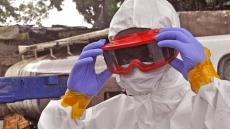A study discovered that filoviruses - a family to which Ebola and its similarly lethal relative Marburg belong - are at least 16-23 million years old.
Filoviruses were likely to have existed in the Miocene Epoch and at that time, the evolutionary lines leading to Ebola and Marburg had already diverged, it noted.
"Filoviruses are far more ancient than previously thought. These things have been interacting with mammals for a long time, several million years," said lead researcher Derek Taylor, professor of biological sciences at the University at Buffalo in the US.
In the study, Taylor and co-author Jeremy Bruenn reported finding remnants of filovirus-like genes in various rodents.
One fossil gene, called VP35, appeared in the same spot in the genomes of four different rodent species: two hamsters and two voles.
This meant the material was likely to have been acquired in or before the Miocene Epoch, prior to when these rodents evolved into distinct species some 16-23 million years ago.
"These rodents have billions of base pairs in their genomes, so the odds of a viral gene inserting itself at the same position in different species at different times are very small. It is likely that the insertion was present in the common ancestor of these rodents," Taylor added.
The genetic material in the VP35 fossil was more closely related to Ebola than to Marburg, indicating that the lines leading to these viruses had already begun diverging from each other in the Miocene.
The first Ebola outbreak in humans occurred in 1976 and scientists still know little about the virus' history.
The research was published in the journal PeerJ.





